Introduction to the Importance of On-Page SEO and Its Place in Digital Strategy

On-page SEO, which refers to optimizing the content and structure of a website from within to improve its ranking in search engine results, is one of the most important pillars of a successful #SEO strategy.
Many webmasters and #digital_marketing experts believe that without sufficient attention to this vital section, achieving long-term SEO goals will be almost impossible.
In fact, on-page SEO is considered a strong foundation for all off-page and technical SEO activities.
From #keywords to #internal_link_structure and #website_loading_speed, all fall within this domain and play a decisive role in user experience and search engines’ understanding of your content.
The content of this article is of an educational and explanatory nature, aiming to comprehensively and practically cover all important aspects of on-page SEO.
Correct understanding and application of on-page SEO principles not only help search engines better understand your content but also provide a better user experience for visitors.
This, in turn, leads to a reduction in bounce rate and an increase in time spent on the site, both of which are important positive signals for ranking.
In other words, on-page SEO is a bridge between your content and user needs, as well as between your site and complex search engine algorithms.
Without internal optimization, even with the best backlinks, it is impossible to achieve top rankings.
Are you dissatisfied with the low sales of your online store?
Rasaweb is your solution for having a professional and high-selling online store.
✅ Significant increase in sales and revenue
✅ Easy and enjoyable shopping experience for customers
⚡ Get free consultation from Rasaweb right now!
The Role of Keywords in On-Page SEO Content Optimization

Keywords are considered the backbone of any on-page SEO strategy.
Correct selection and use of appropriate keywords help search engines understand the main topic of your content and display it to relevant users.
This section of the article is an expert guide to finding and effectively using keywords.
The keyword research process involves identifying phrases that users enter into search engines to find your information, products, or services.
This research should not only focus on primary keywords but also include long-tail keywords (Long-Tail Keywords) and synonyms.
These longer keywords typically have lower search volume but more accurately reflect user intent and have higher conversion rates.
After identifying keywords, the next step is their strategic use in content.
This includes naturally placing keywords in the page title, meta description, headings (H1, H2, H3, etc.), URL, and, of course, in the main body of the content.
Use #focus_keywords and related keywords so that search engines can well recognize the semantic connection between your content and user intent.
However, an important point to note is avoiding keyword stuffing (Keyword Stuffing).
This practice is not only penalized by search engines but also severely degrades the user experience.
The main goal of using keywords is to produce valuable content that responds to user needs.
By focusing on user intent, write your content in a way that keywords fit naturally and smoothly within it.
Technical Aspects of On-Page SEO; From Site Structure to Loading Speed
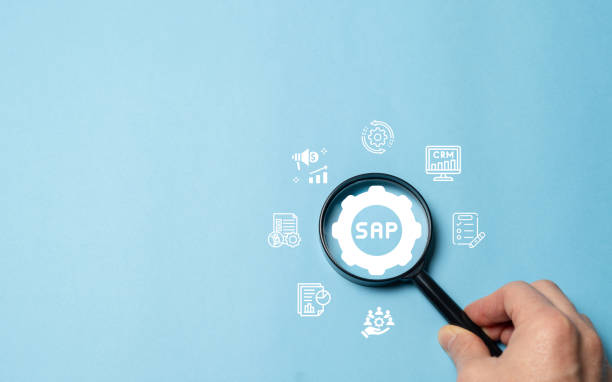
Technical aspects of on-page SEO refer to factors outside of content that affect a site’s crawlability and indexability by search engines, as well as user experience.
This section provides an analytical and comprehensive guide to optimizing these factors.
One of the most important of these aspects is site structure.
A logical and hierarchical structure helps search engines easily find, understand, and index your site’s pages.
Using a pyramid structure with clear categories and subcategories also helps improve site navigation.
Another factor is site loading speed.
Today’s users and search engines expect pages to load quickly.
Tools like Google PageSpeed Insights can help you identify speed-related issues and provide improvement solutions.
Image compression, browser caching, code optimization, and choosing a suitable host are among the solutions for increasing speed.
In addition, mobile-friendliness of the site is extremely important.
Given the significant increase in searches via mobile devices, Google prefers websites optimized for mobile.
Using Responsive Design is the best solution for this purpose.
Issues related to duplicate URLs, proper use of canonical tags, optimization of robots.txt file, and XML sitemap are other vital technical aspects of on-page SEO that need to be carefully examined and resolved.
These factors directly influence how search engines interact with your site and, consequently, its ranking.
| Technical Factor | Importance for SEO | Verification Tools |
|---|---|---|
| Site Loading Speed | Essential for user experience and ranking | Google PageSpeed Insights, GTmetrix |
| Mobile-friendliness | High importance due to mobile search | Google Mobile-Friendly Test |
| URL Structure and Permalinks | Readability for users and search engines | Manual review, SEO Audit tools |
| XML Sitemap and Robots.txt | Guiding search engines for crawling and indexing | Google Search Console |
| Use of HTTPS | Security and Google ranking factor | SSL certificate check |
Creating Quality and Comprehensive Content in On-Page SEO

Content is king, and this statement holds true more than ever in the world of on-page SEO.
Producing quality, comprehensive, and user-needs-oriented content is the primary factor for success in attracting organic traffic.
In this section, we will explain and educate on how to create content that is both valuable to users and optimized for search engines.
Quality content means text that provides accurate, complete, and reliable information.
This content should answer users’ questions, solve their problems, and fulfill their information needs.
For this reason, thought-provoking content that encourages users to think and provides comprehensive answers is highly effective.
Content length can also play a role; typically, longer and more comprehensive content has a better chance of ranking for competitive keywords, as it indicates that you have thoroughly covered the topic.
However, quality takes precedence over quantity.
Your content should be unique and offer added value compared to competitors.
Using examples, statistics, infographics, and relevant images can help enrich the content.
Additionally, optimizing content structure using appropriate headings (H1, H2, H3, etc.), short paragraphs, numbered lists, and bullet points greatly enhances readability and helps search engines understand content structure.
This is an inseparable part of on-page SEO that leads to improved ranking and user trust.
Don’t forget that your content should be regularly updated to maintain its freshness and credibility.
Are you dissatisfied with the low sales of your online store?
Rasaweb is your solution for having a professional and high-selling online store.
✅ Significant increase in sales and revenue
✅ Easy and enjoyable shopping experience for customers
⚡ Get free consultation from Rasaweb right now!
Optimizing Title Tags and Meta Descriptions in On-Page SEO
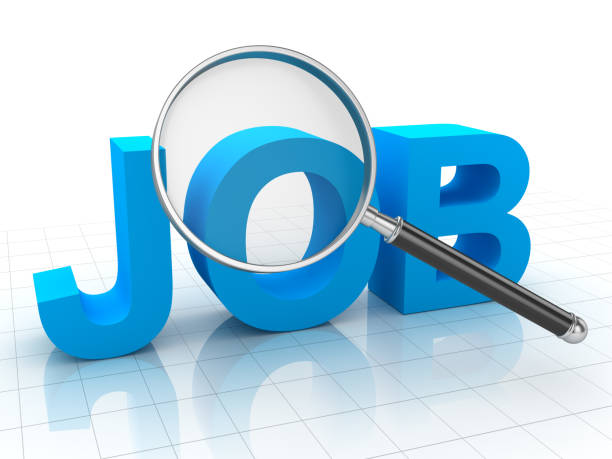
Title Tags and Meta Descriptions are the first things users see in search engine results, and therefore, they play a vital role in their decision to click on your link.
Optimizing these two elements is of high importance for on-page SEO.
The title tag is the name of your page in the browser’s title bar and also the main title displayed in search results.
This tag should include the page’s main keyword and briefly and appealingly describe the page’s content.
The recommended length for a title tag is usually between 50 to 60 characters to be fully displayed in search results.
Avoid duplicate titles and ensure that each page has a unique and relevant title.
This is a very important guidance section in optimizing on-page SEO.
The meta description is a short explanation of the page’s content displayed below the title in search results.
Although the meta description does not directly affect ranking, it can significantly increase the click-through rate (CTR).
A good meta description should include the main keyword, be engaging and persuasive, and encourage users to click.
The optimal length for a meta description is about 150 to 160 characters for full display.
Use persuasive language and include a Call to Action.
Combining a powerful title and an attractive meta description can significantly increase your organic site traffic, even if your first-page ranking doesn’t change.
These two elements are the most crucial parts of initial user interaction with your site in search results and should be optimized with high precision and strategy.
Internal Linking Strategies for SEO and User Experience
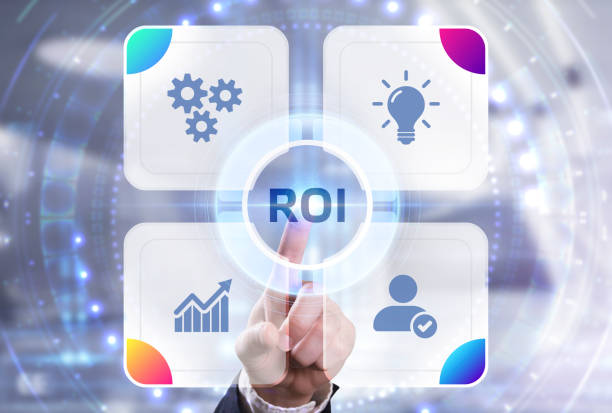
Internal linking, which means creating links between different pages within a website, is one of the most powerful on-page SEO tools that is often overlooked.
This strategy not only helps search engines understand the structure and importance of your various pages but also improves user experience and allows users to easily navigate your site.
In this section, we will expertly guide on the importance and correct methods of internal linking.
Internal links distribute ranking power (PageRank) across your entire site.
When a powerful page links to another page, it transfers a portion of that power to the destination page.
This is especially beneficial for new pages or pages with lower rankings.
When creating internal links, pay special attention to the Anchor Text.
The anchor text should be relevant and descriptive and include keywords related to the destination page.
This helps search engines better understand the topic of the destination page.
For example, instead of “Click here”, use “Comprehensive Guide to On-Page SEO”.
Also, ensure that your internal links are logical and natural.
Internal linking should make sense from a user’s perspective and guide them to other relevant and useful information on your site.
Creating a strong internal linking structure, like a spider web, helps search engines find and index all your pages.
Effective internal linking is not only vital for SEO but can also increase user dwell time on your site, as they can easily find more information in their area of interest.
This is an important dimension in on-page SEO that significantly helps improve your site’s overall performance.
Optimizing Images and Multimedia Files for On-Page SEO
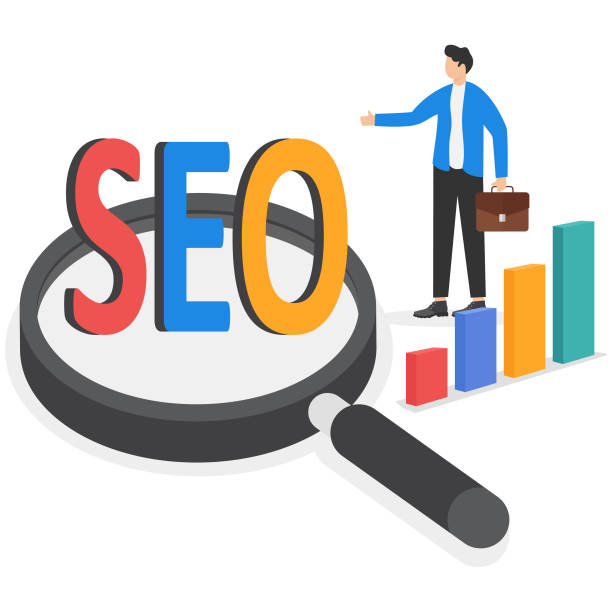
Images and other multimedia files such as videos and infographics play an important role in enriching content and improving user experience.
However, for these elements to become valuable assets for on-page SEO, they must be properly optimized.
This section provides an explanatory and guidance on how to optimize images and multimedia files.
The first step in image optimization is compressing them without losing quality.
High-volume images can severely reduce site loading speed, which is a negative SEO factor itself.
Using appropriate formats (such as WebP for web, JPEG for photos, and PNG for graphics with transparency) and online compression tools can help with this.
Naming image files is also important.
Instead of using default names like “IMG001.jpg”, use descriptive names that include relevant keywords, for example, “on-page-seo-importance-graphic.jpg”.
The most important aspect of image optimization for SEO, is using alternative text or Alt Text.
Alt Text is a brief description of the image content displayed to users who cannot see the image (e.g., visually impaired users using screen readers) and also to search engines.
Alt Text helps search engines understand the image’s topic and its relevance to the page’s content.
Ensure that Alt Text is descriptive and includes relevant keywords.
In addition to images, videos and other multimedia files should also be optimized.
For videos, make sure you use reputable hosting platforms like YouTube or Vimeo and leverage Video Sitemaps (Video Sitemaps) to help search engines discover your video content.
These measures collectively help improve your ranking in image and video search results and drive more traffic to your site, which is an important part of your on-page SEO strategy.
| Element | Description | Optimization Tip |
|---|---|---|
| Image File Name | A name that directly describes the image content. | Use relevant keywords (e.g., my-seo-image.jpg). |
| Alt Text | A text description of the image for search engines and visually impaired users. | Be accurate and descriptive, include keywords, but avoid spam. |
| File Size and Format | File size and image format type. | Compress images (WebP, JPEG), suitable dimensions. |
| Image Title (Title Text) | Text displayed when hovering the mouse over the image. | Optional but can be useful for user experience. |
| Image Caption | Text displayed below the image. | Can include keywords and provide more explanation. |
The Role of User Experience (UX) in Improving On-Page SEO
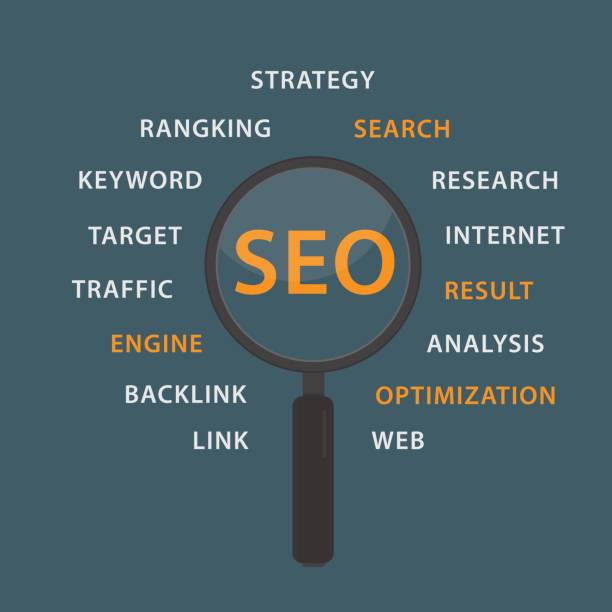
User Experience (UX) has increasingly become a key factor in on-page SEO.
Google and other search engines constantly update their algorithms to give better rankings to websites that provide the best user experience.
This section provides an analytical and guidance on how UX impacts SEO and strategies for improving it.
Google’s Core Web Vitals (including LCP, FID, and CLS), which measure loading speed, interactivity, and visual stability of pages, are directly related to UX and consequently to SEO ranking.
A website with a Responsive Design that displays well on all types of devices (desktop, tablet, mobile) is crucial for user experience.
Easy Navigation, clear menus, logical content structure, and the use of clear Calls to Action all help users easily access the information they need and move around your site.
User dwell time on the site (Dwell Time) and Bounce Rate are also important signals for search engines.
If users immediately return after entering your site (high bounce rate) or spend little time on the site, this indicates their dissatisfaction with the content or user experience, which can harm your SEO ranking.
To improve these metrics, you must provide quality and relevant content, use appealing visual design, and ensure your site is easy to use.
Ultimately, UX is extremely important not only for user satisfaction but also for the success of your on-page SEO strategy.
A website that cares about its users will also be appreciated by search engines.
Are you disappointed by your online store’s low conversion rate?
Rasaweb, with professional online store design, is your definitive solution!
✅ Increase your sales and revenue
✅ Unparalleled user experience for your customers
⚡ Get a free consultation right now!
Importance and Management of 404 Errors and Redirects in On-Page SEO

Proper management of 404 errors and redirects constitutes an important part of your website’s technical on-page SEO health.
Neglecting these issues can harm user experience and hinder search engines’ crawling and indexing of your site.
This section provides an educational and explanatory guide to the importance and methods of managing these errors.
A 404 error occurs when a user or search engine tries to access a page that does not exist.
These errors can happen due to deleted pages, URL changes without redirects, or incorrect address typing by the user.
A large number of 404 errors can damage your site’s reputation and send negative signals to search engines.
A custom and user-friendly 404 page can mitigate this negative experience and guide users to other sections of your site, for example, by providing a search bar or links to main pages.
To identify 404 errors, you can use tools like Google Search Console or Screaming Frog SEO Spider.
When you delete a page or change its URL, using a 301 redirect (permanent redirect) is essential.
A 301 redirect not only directs the user to the new address but also transfers approximately 90 to 99 percent of the previous page’s SEO power to the new page.
This prevents loss of ranking and traffic.
Incorrect use of redirects, such as redirect chains or redirect loops, can cause problems.
Therefore, careful and planned management of redirects is crucial for maintaining SEO health and user experience in on-page SEO.
This process prevents the loss of your efforts in content and structure optimization.
Analyzing and Monitoring On-Page SEO Performance with Available Tools

Success in on-page SEO is not limited to the correct implementation of techniques; it also requires continuous performance analysis and monitoring.
This section of the article analytically and educationally introduces key tools and metrics for continuously evaluating and improving your on-page SEO strategies.
Many tools are available to assist you in this area.
Google Search Console is one of the most essential tools, providing vital information about your site’s performance in Google search, including ranked keywords, crawl errors, mobile-friendliness issues, and indexing status.
Using this tool, you can see how Google views your site.
Google Analytics is another tool that provides deep insights into user behavior on your site, including the number of visitors, dwell time, bounce rate, and user navigation paths.
This data helps you identify the strengths and weaknesses of your content and site structure from a user’s perspective.
Metrics such as keyword ranking, organic traffic, click-through rate (CTR) from search results, and conversion rate are all important indicators for measuring success in on-page SEO.
Additionally, specialized SEO tools like Ahrefs, Semrush, and Moz also offer advanced capabilities for competitor analysis, keyword research, and backlink monitoring, which can give you a more comprehensive view of your SEO performance.
By regularly reviewing this data and adapting your strategies based on the results, you can continuously improve your on-page SEO performance and achieve a better position in search results.
This process is a cycle of implementation, monitoring, analysis, and optimization that never stops.
Frequently Asked Questions
| Question | Answer |
|---|---|
| What is On-page SEO? | On-page SEO refers to a set of actions performed within your website to improve its ranking in search engine results. This includes optimizing content, site structure, and HTML code. |
| Why is On-page SEO important? | On-page SEO helps search engines understand your page’s content and determine if your content is relevant to searchers. It is the foundation of any successful SEO strategy. |
| What are the key elements of On-page SEO? | Page title (Title Tag), meta description (Meta Description), keyword usage, image optimization, heading structure (H1, H2, …), internal linking, and content quality are key elements. |
| How to optimize the page title (Title Tag)? | The page title should include the main keyword, be attractive and clickable, and its length should be between 50 to 60 characters (or appropriate pixels) to be fully displayed in search results. |
| What role does Meta Description play in On-page SEO? | The meta description is a summary of the page’s content displayed below the title in search results. Although it does not directly affect ranking, it helps SEO by increasing the click-through rate (CTR). |
| What is the importance of using heading structure (H1, H2, H3) in On-page SEO? | Headings structure the page content and make it easier to read. H1 is usually the main title of the page and should include the keyword. H2 and H3 are used to organize sub-sections and help search engines understand the content hierarchy. |
| How to effectively use keywords in content? | Keywords should be used naturally and logically throughout the content, including the introduction, body, and conclusion. Avoid keyword stuffing. |
| What steps are involved in optimizing images for On-page SEO? | It includes compressing images to reduce file size, using descriptive file names, adding appropriate alternative text (Alt Text), and optimizing the image title and description. Alt Text is vital for accessibility and helping search engines understand image content. |
| What is Internal Linking and what are its benefits? | Internal linking refers to creating links from one page on your website to another page on the same website. This helps users navigate your site easily, distributes page authority across the site, and helps search engines better understand your site’s structure. |
| What is the importance of content quality in On-page SEO? | High-quality, accurate, comprehensive, and valuable content for users, is the cornerstone of on-page SEO. Search engines prefer content that meets user needs. Quality content leads to longer user dwell time on the site (Dwell Time) and reduced bounce rate (Bounce Rate), which are positive SEO signals. |
And other advertising services from Rasaweb Advertising Agency
Smart Social Media: Professional optimization to increase click-through rate using precise audience targeting.
Smart Data Analysis: An innovative platform for improving campaign management using real data.
Smart Sales Automation: Revolutionize customer acquisition with the help of Google Ads management.
Smart Link Building: A professional solution for digital branding with a focus on precise audience targeting.
Smart Custom Software: Revolutionize website visits with the help of intelligent data analysis.
And over hundreds of other services in the field of internet advertising, advertising consultation, and organizational solutions
Internet Advertising | Advertising Strategy | Advertorial
Sources
Advanced Comprehensive On-Page SEO Training
Complete Guide to Website On-Page SEO
On-Page SEO Strategies to Improve Ranking
What is On-Page SEO and Why is it Important?
To elevate your business in the digital world and reach the peaks of success, Rasaweb Afarin Digital Marketing Agency is by your side with innovative services including website design with a modern user interface, SEO, and advertising campaign management, to ensure a powerful and lasting online presence.
📍 Tehran, Mirdamad Street, next to Bank Markazi, Southern Kazeroon Alley, Ramin Alley, No. 6




